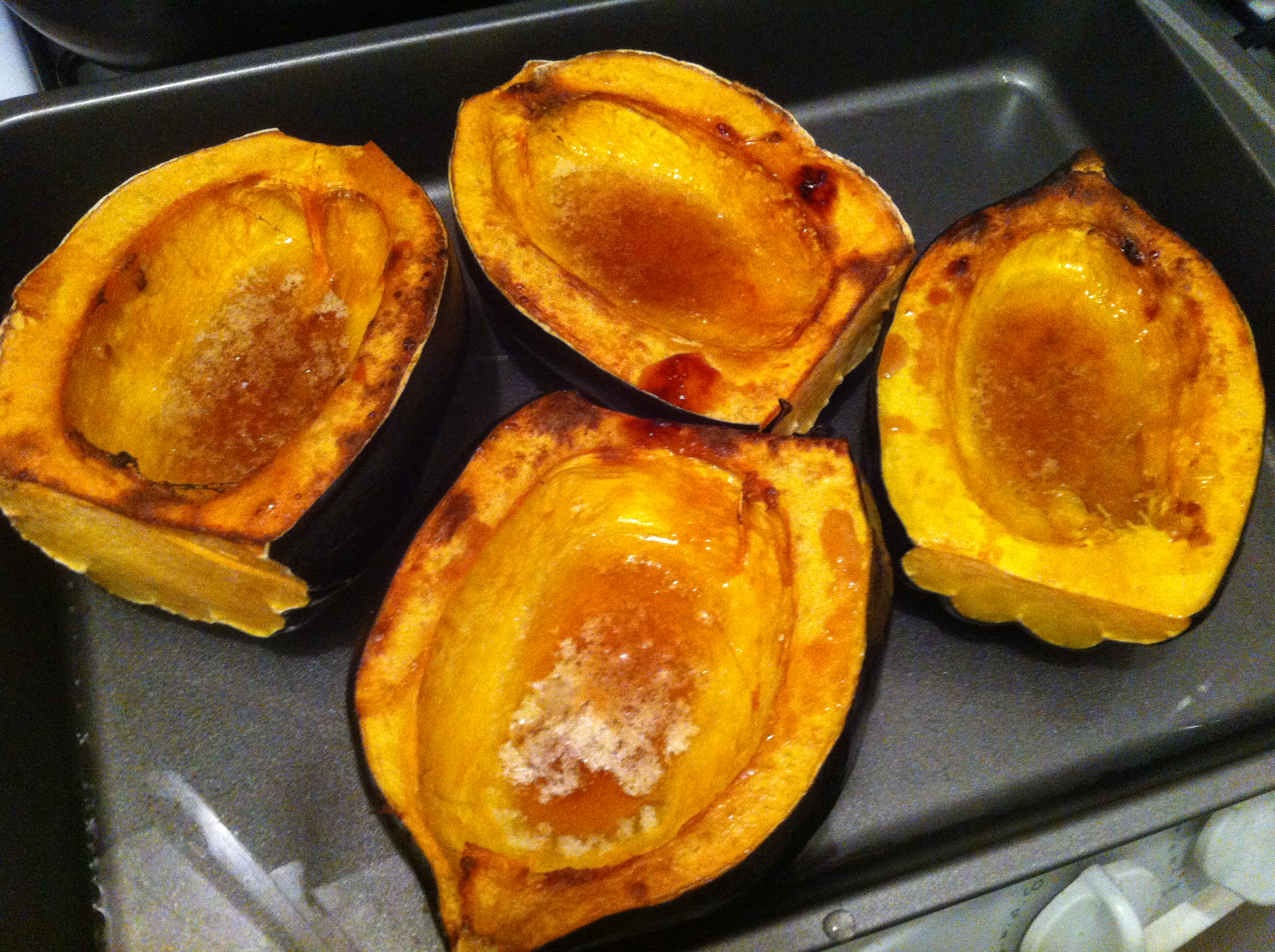 |
| The pumpkin tunnel is open this weekend! Make sure to stop by and pick up some pumpkins! |
Okay, now it's seriously fall. Everything is orange now, especially lots and lots of pumpkins. Jack-o-lanterns? Well, not quite yet. But it is time for [drumroll]... pumpkin soup!! Wahoo! First things first. Do not use canned pumpkin. You will absolutely notice the difference, and it's well worth the effort. Here's what you do: Cut the pumpkins in half, regardless of size. (Be careful, often you have to put some force behind your knife to cut pumpkin or acorn squash. Use a sharp knife, in other words get yours sharpened, and be extra mindful of where your hands and fingers are.) Take out the seeds and strings, drizzle with olive oil, and salt and pepper. Wrap tightly in foil, and bake at 350˚F for about 90 minutes. Ta da! It's soft, let it cool and scrape the pulp off the skin. I put it in 8oz paper cups and freeze it, then take the cup off and leave in a Ziploc in the freezer. On a cool spring day, it's nice to make pumpkin pie again.
 |
| Butternut, and pretty much any other orange flesh squash make really good soup! |
As for the soup itself, it's a very blank canvas upon which you can try lots of things. Boil the pumpkin in chicken, vegetable, or even seafood stock (especially lobster!), add aromatics (celery, onion, carrots, fennel, that sort of thing), herbs and spices, and cook. Use an immersion blender to purée the soup, and reduce until it's the desired consistency. Finishing with a little butter or cream makes it even awesomer.
As for what seasonings to use, it's pretty wide open. Everything from the creole recipe linked above, to curry, to something fancy with saffron will work. (By the way, if anyone gets the pumpkin bowl thing in that last recipe to work, email me and tell me how you did it.) This recipe is a hearty version with ham. Or, for simplicity, I just use the same spices that go in pumpkin pie with just a small handful of brown sugar and some sage. That one's pretty classic.
It's fall. Enjoy it while it's here! I hope to see you and the kids at the pumpkin tunnel this weekend. Happy soup cooking!
 |
| So how much soup would one of the big boys make? |














